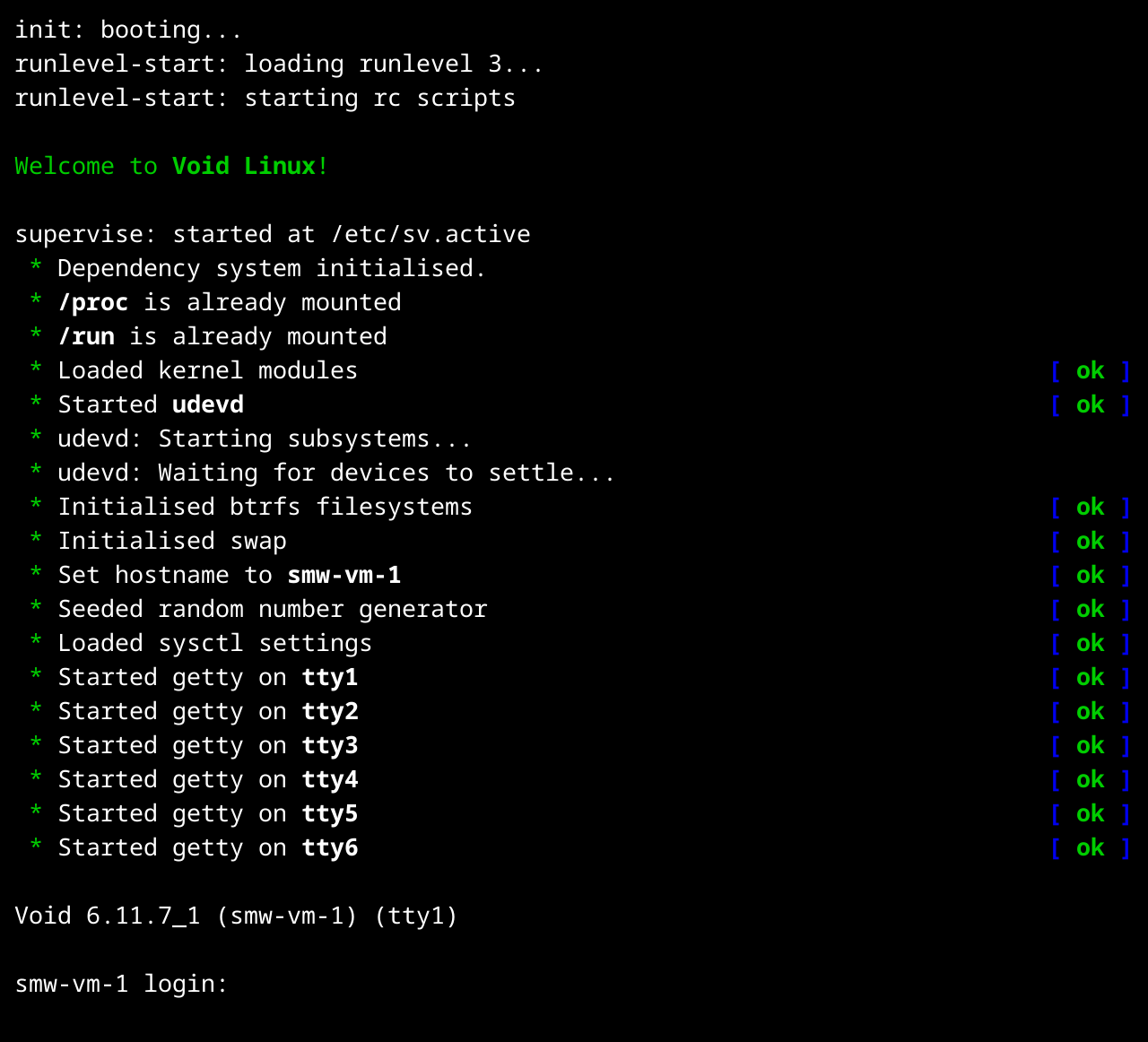ginitd
ginitd is a suite of tools designed to handle system initialisation and service management. ginitd includes several programs; these are listed below. For support queries involving ginitd, please send an email to smw@ylur.me. If I think that your query is common enough to be helpful to other people, I shall add it to the FAQ.
I currently host the ginitd git repository on Github. It is possible, but far from certain, that in about 5 months (after house renovations finish), I shall move my git repositories to my own git server. The current URL of the repository is https://github.com/smwms1/ginitd.
ginitd is currently in the pre-alpha stage and is not usable. Not all of its components have even been written yet, and it will need some time to mature and for bugs (if any exist) to be squashed. I hope to release ginitd in the alpha stage at some point in early 2025. It is currently NOT USABLE!

Programs/Scripts
- init
- The init daemon. This does almost nothing, except calling the runlevel program (/sbin/runlevel-start) to start up and shut down the system. Of course, it also reaps its children. It's incredibly simple (look at this, systemd!). See more...
- telinit
-
A symbolic link to /sbin/init, for compatibility with System V commands.
You can run
telinit 0to shut down,telinit 1to go to single user mode, andtelinit 6to reboot. - runlevel
- A System V compatible program to tell you the current runlevel of the system, the previous runlevel of the system, and whether it is stable (i.e. whether the computer is shutting down, starting up, etc.). See more...
- runlevel-start
- The program which actually manages system startup - essentially, this starts and kills the service manager (and all other programs). It's a lot more complex than it seems! It reads the configuration file at /etc/ginitd/runlevel.conf. See more...
- supervise
- The service manager itself! This program manages a service directory, which contains 'init scripts'. These init scripts are called as necessary throughout the startup and shutdown process. See more...